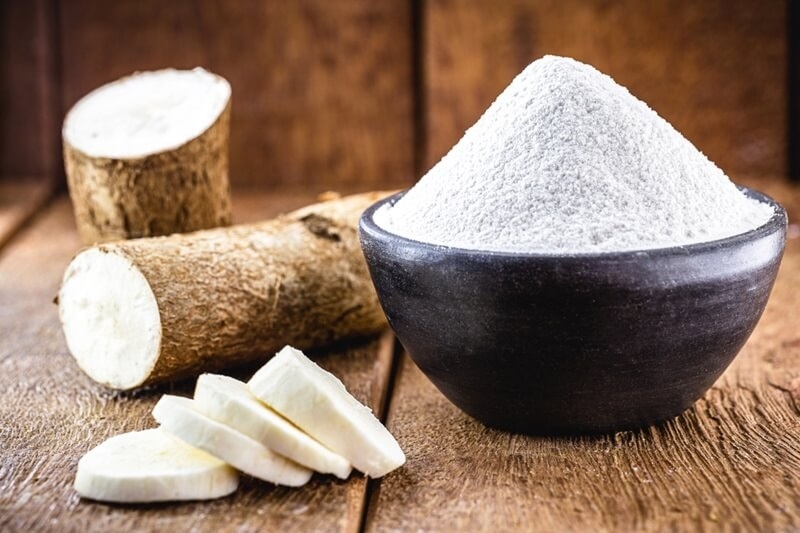
If you’ve ever tried making African food outside the continent, you’ll know the struggle. You get excited about trying a recipe, you gather most of the ingredients, and then—bam—you hit a wall. Palm oil? Cassava flour? A spice blend you can’t even pronounce, let alone find in your local store? It happens more often than you’d like. But here’s the thing: it doesn’t have to stop you. With a little creativity and some smart swaps, you can keep the soul of the dish alive. That’s where African Ingredient Substitutes come in.
African cuisine is bold. It’s layered, hearty, and unapologetically flavorful. And most of all, it’s tied to memory. Sunday dinners with family. Celebrations. Comfort food after a long week. When you don’t have access to the exact ingredients, it feels like you’re missing a piece of that story. But substitutes aren’t cheats. They’re bridges. They help the flavors travel beyond borders. And honestly, they keep people like us—home cooks with limited access—from giving up halfway.
Palm oil is a powerhouse in West African cooking. It’s what makes egusi stew glow with that deep orange hue. It gives jollof rice a richness you just can’t fake. But maybe you’re cutting back on saturated fats. Or maybe your local store just doesn’t stock it. What’s the move? Finding a substitute for palm oil in cooking can be tricky, but it’s not impossible.
A clever trick is blending roasted red peppers with olive oil to capture both color and body. Smoked paprika or a touch of tomato paste adds that earthy undertone. And if you want richness, coconut oil steps in nicely—it won’t taste the same, but it gives stews that velvety feel. Sure, it’s not perfect, but perfection isn’t the point. It’s about getting close enough that one spoonful still feels like home.

Cassava flour is everywhere in African kitchens. It’s gluten-free, versatile, and a staple for fufu and flatbreads. But outside Africa? You might need to hunt it down, and even then it’s expensive. So, let’s talk about how to replace cassava flour without ruining your dish.
Tapioca flour is the obvious cousin—it’s from the same root, so you get that familiar starchiness. If you’re making bread, potato starch or rice flour can hold their own, though you may need to play around with water levels. For pancakes or light baking, almond flour is a fun twist. It adds a nutty flavor that doesn’t feel out of place. Honestly, it’s about testing small batches until you hit the texture you’re after.
Think of this as your toolbox. Oils, flours, spices, and vegetables—they all have backup options. The beauty of African cooking is that it’s flexible. No plantains? Try ripe bananas lightly fried. Can’t find sorghum? Swap it with quinoa or oats. The point isn’t to copy the recipe word-for-word, but to honor the flavors and adapt them to what you’ve got.
Spices are what elevate African food. They turn rice into jollof, meat into suya, and a plain stew into something unforgettable. But spice blends like berbere or ras el hanout? Not so easy to come by. That’s where African spice alternatives save the day.
For berbere, try mixing paprika, chili powder, ginger, and cinnamon. Suya spice? Ground peanuts, cayenne, garlic powder, and cumin will take you surprisingly close. Ras el hanout is more complicated, but a combo of turmeric, nutmeg, and cardamom scratches the itch. It’s about layering flavors until your kitchen smells like something worth gathering around.
Let’s be honest, sometimes you’re missing more than one thing. That’s the reality of cooking African food without local ingredients. And it can feel overwhelming. But if you break it down, it’s manageable.
Ask yourself: what does this ingredient bring to the dish? Is it heat? Color? Thickness? Once you know that, swapping gets easier. Sweet potatoes stand in for yams. Oatmeal can play the role of sorghum porridge. Even egusi soup can be made with pumpkin seeds if you can’t get the real thing. The dish might not be a carbon copy, but it will carry the same heart.
African food is already full of beans, greens, and grains, so vegan cooking doesn’t feel forced. Still, some classics lean on meat or dairy. That’s where African vegan swaps keep things inclusive.
Mushrooms or jackfruit add that meaty chewiness to stews. Coconut milk brings the creaminess you’d expect in curries. Groundnuts step up for protein and richness. And here’s a fun one: marinate tofu with suya spice and grill it—it’s smoky, spicy, and so satisfying. Even egusi soup holds up beautifully when you go heavy on spinach and okra instead of meat.
This is where improvisation really shines. Can’t find millet? Quinoa is your friend. No teff for injera? Whole wheat flour with a splash of rye works in a pinch. Dried fish missing? A dab of anchovy paste does wonders. Need African chili heat? Grab Thai bird’s eye chilies or habaneros. Little swaps like these mean you don’t have to wait for a specialty store to stock up—you can dive in tonight.
Here’s something worth saying: for many Africans living abroad, missing ingredients isn’t just a cooking problem. It’s emotional. Food carries memory, and not finding what you grew up with stings. But substitutes don’t erase tradition. They keep it alive. A bowl of jollof with olive oil instead of palm oil might not be “exact,” but when you sit down to eat, the comfort is still there. That’s what matters.
Start small—don’t swap five things at once.
Pay attention to texture. African dishes love hearty, thick bases.
Spices are your safety net. When in doubt, season generously.
Taste as you go. Recipes are guides, not gospel.
Some swaps have already made their way into kitchens everywhere. Chickpeas instead of cowpeas. Kale in place of collard greens. Peanut butter when fresh groundnuts aren’t handy. These changes aren’t shortcuts—they’re how African flavors adapt and spread across the world.
People worry that swapping ingredients makes a dish “less African.” But authenticity isn’t about rigid checklists. It’s about flavor, intention, and respect. You can honor tradition while working with what you’ve got. Think of it less as replacing, and more as carrying the story forward in a new language.
Cooking African food outside the continent can feel intimidating, but it doesn’t have to stop you. Substitutes aren’t the enemy—they’re the solution. They’re what let you turn a regular Wednesday night into a feast that tastes like home, even when the ingredients don’t line up perfectly. Whether it’s swapping palm oil for red peppers, cassava flour for tapioca, or suya spice for your own homemade blend, the spirit of the dish stays the same. And that’s the whole point: keeping the flavors alive, no matter where you are.
This content was created by AI